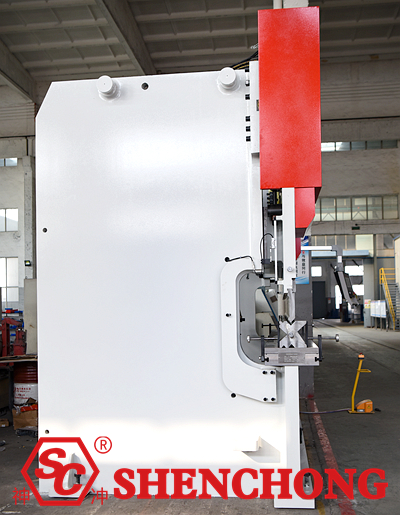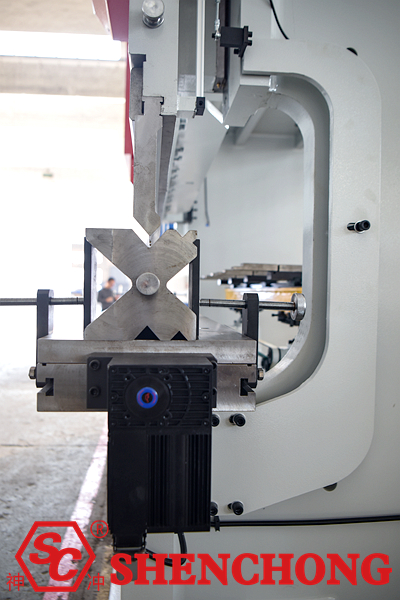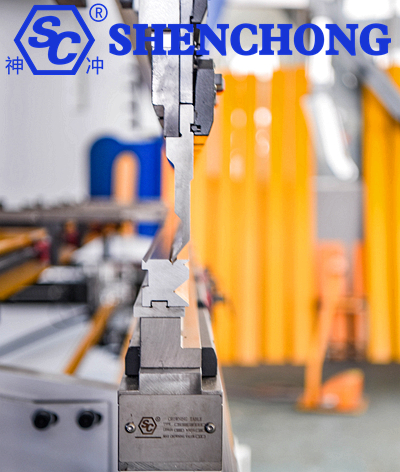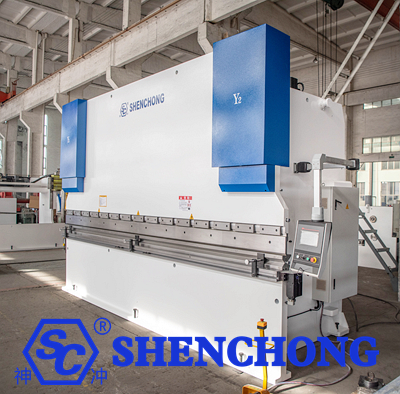
The quality of CNC press brake tooling directly affects bending accuracy, efficiency, and using life. Choosing the right press brake tooling involves finding the optimal balance between material properties, manufacturing processes, machine capabilities, cost, and service life. The following points can serve as guidelines for selecting the best press brake tooling:

Carbon steel: Standard dies are sufficient. Use a general-purpose V die.
Stainless steel: High hardness and spring back → Use a wider V-groove and high-strength die.
Aluminum/Copper: Relatively soft → Use a narrow V die. The die surface must be smooth to prevent damage.
Thin sheet (≤1mm): Narrow V die, sharp-cornered or small-radius upper die to prevent damage or edge deformation.
Medium-thickness sheet (1–6mm): Standard V die, most commonly used.
Thick sheet (≥6mm): Wide V die or segmented die to avoid excessive force and damage.
Right angle/standard angle: Standard upper die + V-groove lower die.
Sharp angle: Sharp-angle die or special-purpose die.
Large radius/arc: Radius die or multiple bending operations.
Goose neck die (for clearance), sharp-edged die, etc.
Common materials: 42CrMo, T8/T10A, Cr12MoV, SKD11.
Selection criteria: High hardness and wear resistance. Also consider toughness to prevent chipping.
Heat treatment processes: Surface hardening, vacuum heat treatment, nitriding can extend die life.
High strength → Prevents damage
Good toughness → Prevents chipping
Machine tonnage: Die strength must be higher than the bending machine pressure. Otherwise, it may crack or break.
Quick-change clamp/standard interface: Choose a die standard compatible with the machine (e.g., European, Chinese, or American standard) for easy replacement.
Accuracy requirements: For high-precision processing, use segmented or precision-ground dies to ensure consistent angles.
Small batches of various parts → Segmented or modular dies are more flexible.
Maintenance: Keep the die clean to prevent damage. Regularly grind and repair.

Standard molds: Versatile and suitable for most bending processes.
Segmented molds: Ideal for small batch sizes and diverse product types, offering flexibility and convenience.
Specialized molds: Such as goose-neck molds (for clearance), R-angle molds (for rounded bends), and knife-edge molds (for sharp-angle bends).
Choose reputable manufacturers to ensure mold accuracy, material quality, and heat treatment standards.
If possible, consider imported molds (e.g., European standard molds) for higher precision and longer lifespan.
Prioritize after-sales service. Prompt repair or replacement is essential for wear or damage.
Don't assume that more expensive is always better; consider your specific processing needs and budget.
During use, keep the mold clean to prevent hard particles from scratching the surface.
Regularly inspect for wear and perform grinding or repair as needed.

The following table provides practical recommendations, covering common sheet metal materials (mild steel, stainless steel, aluminum alloy). The parameters in the table are based on empirical values; actual selection should be adjusted based on the bending angle, forming accuracy, and the tonnage of the bending machine.
V-groove width (mm) ≈ k × Plate thickness (t, mm)
Mild steel: k ≈ 8–12
Stainless steel: k ≈ 10–14
Aluminum alloy: k ≈ 6–8
Clearance (punch clearance) ≈ Plate thickness × c
Mild steel: c ≈ 8%–10%
Stainless steel: c ≈ 10%–12%
Aluminum alloy: c ≈ 6%–8%
Plate thickness range (t, mm) | Recommended V-groove width (mm) (Carbon steel / Stainless steel / Aluminum) | Recommended gap (total gap/both sides combined) | Recommended upper die tip/radius | Recommended lower die | Examples of applicable materials | Notes |
0.5-1.0 | 4–12 / 5–14 / 3–8 | 0.04–0.10 mm | Acute angle or R0.2-R0.5 | Narrow V-groove (slender slot) | Thin cold-rolled steel/aluminum | Thin materials are prone to cracking; use support or backing plates; pay attention to the surface finish of the lower die. |
1.0-2.0 | 8 –24 / 10–28 / 6–16 | 0.08–0.24 mm | R0.5–R1 | Standard V-groove | Cold-rolled steel, stainless steel, aluminum | Commonly used parameters; angle control primarily relies on the stroke of the upper die. |
2.0-3.0 | 16–36 / 20–42 / 12–24 | 0.16–0.36 mm | R1–R1.5 | Standard V-groove or wide V-groove | Medium-to-thick plate | Increase the machine tonnage capacity; consider springback compensation. |
3.0-6.0 | 24–72 / 30–84 / 18–48 | 0.24–0.72 mm | R1.5–R3 | Wide V-groove or segmented V-groove | Thick steel, stainless steel | For thick plates, prioritize wider V-angles and more robust die materials. |
6.0-10.0 | 48–120 / 60–140 / 36–80 | 0.48–1.20 mm | R3–R6 | Wide V-groove or custom-made lower die | Heavy-duty structural components | Requires a high-tonnage press; consider segmented dies to reduce stress and deformation. |
10.0-16.0 | 80–192 / 100-224 / 60–128 | 0.8–1.92 mm | R6–R10 | Wide V-groove or custom-made lower die with reinforcing ribs | Thick plates, structural steel | Segmented/composite dies are commonly used to reduce machine load. |
16.0-25.0 | 12 –300 / 160–350 / 96–200 | 1.28–3.00 mm | R10+ | Custom-made lower die(wide groove/reinforced structure) | Heavy structural components | Machine tonnage capacity and clamping force must be evaluated. |
>25.0 | Custom design (please contact the manufacturer) | Custom design | Custom-made upper die | Custom-designed lower mold | Extra-thick materials | Testing with a prototype die and calculating tonnage and safety factors is strongly recommended. |
- Thin Material (≤1mm): Use a narrow V-slot and small radius. Minimize gap to prevent crushing and edge deformation. Use soft pads or liners if necessary.
- Standard Thickness (1–6mm): Standard V-slot is suitable. Select the appropriate k-factor based on the material. Account for spring back and adjust the bend allowance.
- Thick Material (>6mm): Use a wider V-slot or segmented tooling to distribute force and reduce bending inconsistencies.
- Stainless Steel: Harder than carbon steel and more prone to spring back. Use a wider V-slot and slightly larger gap. Machine requires higher tonnage.
- Aluminum Alloy: Softer. Use a narrower V-slot and smaller gap to prevent flattening and scratching.
- Quickly calculate using the empirical formula (V = k×t), then fine-tune using a reference table.
- Perform trial bends: Especially for new materials or parts, perform 1-2 trial bends, measure the angle, and adjust the tooling or program.
- Consider press brake tool life: Select suitable materials (e.g., Cr12MoV, SKD11) and heat treatment processes; regularly grind and maintain the tooling.
- Consider segmented/composite tooling: For complex or thick parts, this can significantly reduce tonnage requirements and improve consistency.

When selecting the best press brake tooling, several factors should be considered comprehensively, including the material and thickness of the sheet metal, the bending process (angle and radius), the press brake tonnage capacity, the tooling material and heat treatment, standardized interfaces, as well as durability and cost-effectiveness.
Generally speaking:
High-precision, large-batch production → High-strength tooling is recommended
Standard batch production → Standard V-groove tooling
Complex workpieces → Special tooling (gooseneck, R-angle, sharp angle, etc.)
Small-batch, diverse production runs → Segmented tooling